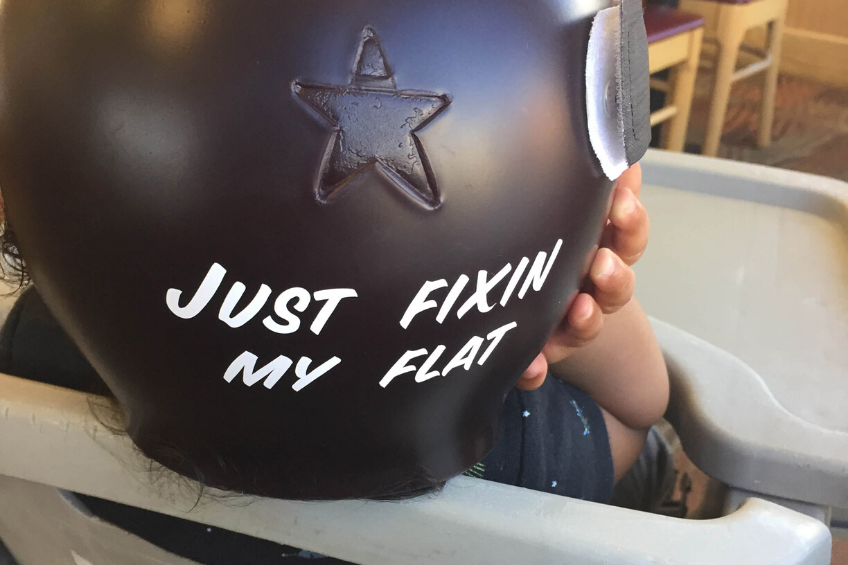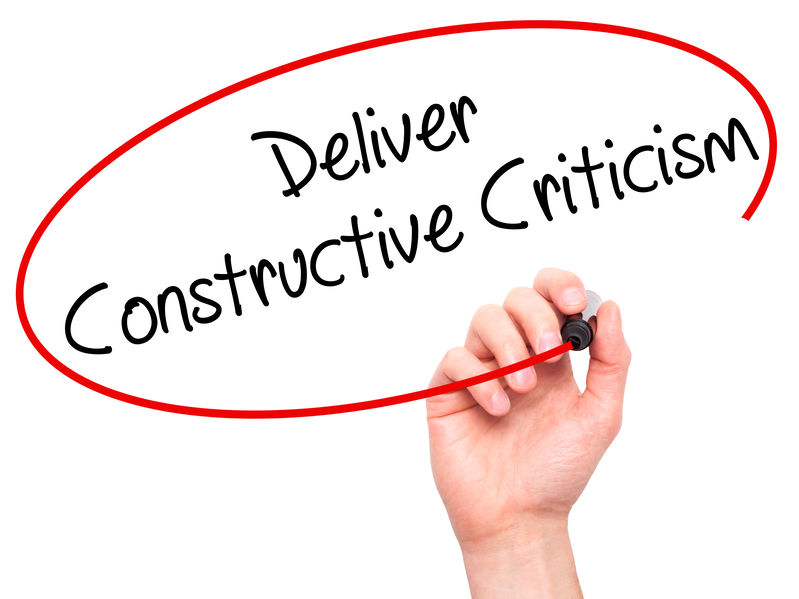To tell or not to tell about a baby’s flat head?
/
It is such a paradoxical moment. You are out in public and you notice a young baby with a clear-cut case of plagiocephaly. Or maybe it’s your close friend’s baby whom you see often, and the problem is getting progressively worse. Recent studies suggest that almost fifty percent of babies have some type of flat head. This is because of the way babies are put to sleep (the back to sleep method) and even when they are awake, they are either confined to a car seat or stroller. These positions only aggravate the problem even more.

What to do if you notice a stranger’s, relative’s or friend’s baby, with a potential flat head or plagiocephaly issue? Should you sit silently and say nothing so as not to hurt the parent? Should you be blunt and insulting?
Let’s say, you are an experienced parent who went through the chapter of your baby having a flat head, did your research, and ultimately decided to go with cranial therapy. You believe that you are an expert in the field and are the go-to person for anyone who has a child with this condition. However, surprising, upon seeing another baby with a flat head, it may not be your place to approach the parent or parents automatically.
How did you find out about your own baby’s flat head? Did someone else mention it, or was it at a doctor’s visit? Maybe you even noticed it yourself. It’s possible that the parent in question has not noticed their baby’s unusually shaped head, it’s more probable that they have.
As a good Samaritan, and a parent who has experienced the flat head issue, you are on a mission to make sure that other parents know about cranial therapy programs, whether it be helmet, physical therapy or a combination of both. The comment may come out of your mouth automatically without thinking because you feel that you will be saving another baby’s future. As you are aware, this is a condition which if found early enough can be easily improved.

If your own baby, was diagnosed at an early enough age, he was given the helmet at the right time and his perfectly shaped head is yours and his crowning glory. You would like the entire world to do the same thing for their baby. The parents in question may have already been advised by their pediatrician, mother, mother-in-law or other acquaintances of authority about the baby’s flat head. By telling the parents, you will appear to them as a broken record. One must think carefully before speaking to others. Silence is golden, may be true in some cases.
Basic advice: To tell or not to tell?
1) It depends on how well you know the parents. I have personally tried this approach and the parents were aware of how their baby’s head shape appeared. However, with a large family, how long could they be expected to hold the baby during the baby’s waking hours? Anyone who has tried long stretches of tummy time, know that until the baby is older, they hate tummy time. One may think that the worst that will happen is that the parents will be offended. If your campaign is successful and the parents are disturbed, you will still feel vindicated that now this poor baby will get the help that is needed, and you have saved him from a future life of embarrassment and bullying. In my experience, the parents ignored my advice.
2) Touching on your own experience may be appreciated by some parents. As close friends who will have likely seen your baby with the helmet, they are not oblivious to this topic. At least, the subject is not just coming out of the blue. A better scenario is when the other parents will ask you about your experience either when they see the helmet or ask you about the missing helmet when they see you again.
3) If you have not had any personal experience with a baby with flat head syndrome, referring the parents to articles about plagiocephaly that you might have read is another way to approach the topic rather than in direct conversation.

In my own personal experience, no matter what the subject is, no one wants to be criticized. We may believe that notifying a parent of a problem or potential problem that their baby or child has is called “constructive criticism”. That’s true if you are the one advising the other person. If it’s you who is being advised, then it’s just plain downright criticism. If you have absolutely decided that you must say something (“see something, say something”). We have listed above some of the conventional modes of alerting a parent to the possibility of plagiocephaly.
More sensitive and effective approaches when addressing plagiocephaly
Let’s examine some more sophisticated, psychological methods of dealing with criticism in general. Constructive criticism could be something as innocent as watching a neighbor’s child eat junk food and mentioning the health benefits of eating healthy, to a dangerous situation where a young child is being left unattended for too long of a period being a safety issue. The techniques are still the same. No matter what the issue, we must be sensitive to another person’s feelings before offering rebuke.
How to Win Friends and Influence People, written by Dale Carnegie, published in 1936, is a tried and true go to book for any social interaction with any type and age people. Carnegie’s methodologies will be a breath of fresh air when compared to the conventional advice given previously or on various websites answering the question, how do I tell someone that their baby has a flat head?

Dale Carnegie’s instructions for life are, practical, sincere, intuitive and smart. What was relevant for almost one hundred years ago is even more relevant today with so many people carrying their heart on their sleeve and a chip on their shoulder.
In his chapter, How to Criticize and not be Hated for it, Carnegie tells stories of the correct and incorrect ways to give constructive criticism.
1) Call attention to people’s mistakes indirectly. Change the word “but” to “and”. For example, if you are bothered by the flat head of your friend’s baby, instead of speaking about it directly, you could possibly say, “This is the cutest baby I’ve seen in a long time. Look how she’s smiling at me when I give her attention. And she’s only three months old. She is so smart. Her eyes are so blue, just like yours. And, her head looks just like my (or Donna’s) baby’s. It has a bit of a flatness to it, would you say? Her blond hair is so long for a baby her age, it’s almost time for a ponytail.” Every single fact you mentioned is true, included her flat head. It was mixed up in a bowl full of compliments.
2) Talk about your own mistakes before criticizing your friend. Humbling oneself and admitting one’s own mistakes even when they have not yet been corrected, can help convince someone else to make a change for the better. If you have experienced plagiocephaly with your own child, you may speak about how you were so negligent (if pertinent) or how sensitive you are when other people bring attention to your baby’s flat head. “Calling attention to one’s mistakes works wonders with sensitive people who would resent bitterly any direct criticism.” (Dale Carnegie)
3) Ask questions instead of giving instructions directly to the person involved. Asking questions, not only makes a demand more acceptable, it can awaken the creativity of the other person. For example, making the other person part of the conversation of give and take, will make them feel that ultimately, they made the decision themselves and were not directly influenced by you. Discuss different options, even suggesting that some people leave the baby alone without interference of any therapies. Ask if they have ever noticed adults of Oriental descent with flat heads. Ask their opinion, if this is appealing head shape to the person in question.
4) Let the other person save face. If, the parent of the baby in question has never noticed that her baby has flat head syndrome, she may very well be embarrassed by your comments. You can bring to her attention, that even the most famous celebrities like Chrissy Teigen have dealt with treating flat head baby syndrome.
The four above suggestions are all from the book, How to Win Friends & Influence People. The most important aspect of these points is sincerity. Any intelligent person can tell if you are insincere and they will never take your recommendations seriously. When in doubt, leave it out and remember silence is golden. If you don’t feel you have the social smarts to pull it off, and you want to make sure the baby in question will be treated for plagiocephaly if necessary, get a hold of someone you know they respect and asked this person to relay this very important message. No matter how important you feel your advice is, it takes a lot of street smarts to get someone to listen and act on your suggestion.

Cranial Therapy Centers is the only early interventions cranial center in the United States which provides both helmet and manual therapy treatment. We are American Board for Certification in Orthotics, Prosthetics and Pedorthics Facility. Visit us in Lakewood NJ, at 1352 River Ave Unit 14, Lakewood NJ, 08701 or in Teaneck NJ at 1086 Teaneck Road Suite 3F, Teaneck, NJ 07666. You can also email us info@cranialtherapycenters.com
